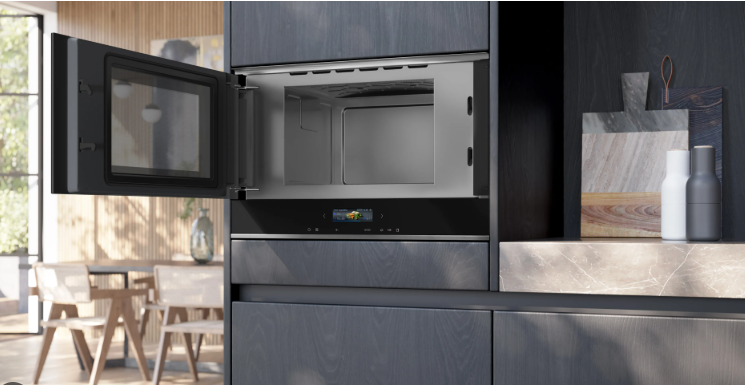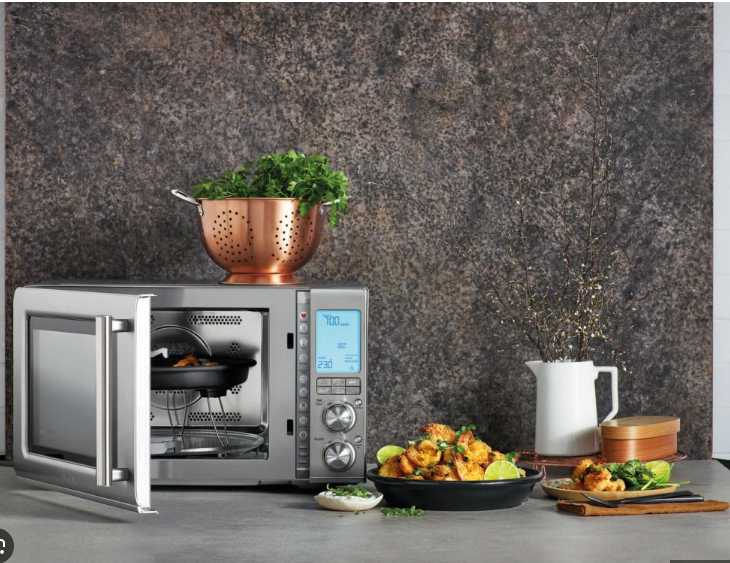The office breakroom: a sanctuary for coffee breaks, a hub for water-cooler gossip, and, all too often, the battleground for the lone, overworked microwave. Choosing the right Microwave Oven For Office Use is more than just an afterthought; it’s a crucial decision that impacts daily workflow, employee morale, and even workplace safety. A flimsy, underpowered domestic model just won’t cut it when faced with a lunchtime rush of frozen meals, leftovers, and instant soups.
This guide is your definitive resource for navigating the world of workplace microwaves. We’ll break down everything you need to know—from essential features and the great commercial vs. residential debate to the non-negotiable maintenance routines that keep the peace and prevent appliance meltdowns. Let’s find the perfect heating hero for your team.
Why Your Office Microwave Choice Matters
Think about it. The average home microwave might be used a few times a day by a handful of people. An office microwave, on the other hand, can see dozens of uses before noon. This high-traffic environment puts unique demands on an appliance.
- High Volume: It needs to withstand constant opening, closing, and button-mashing from a diverse group of users.
- Varied Foods: From reheating coffee to defrosting a brick-solid lasagna, it has to handle a wide range of tasks efficiently.
- User Diversity: Not everyone is an appliance whisperer. The controls must be intuitive enough for anyone to use without needing a manual.
- Safety: In a shared space, features that prevent overheating and are easy to clean are paramount to avoiding hazards and hygiene issues.
Key Features for the Best Microwave Oven for Office Use
When you’re on the hunt for a new office microwave, don’t just grab the first one on sale. Look for these specific features that are tailor-made for a demanding workplace environment.
Durability and Build Quality
The number one priority is a robust construction. Look for a stainless steel interior and exterior, a sturdy door handle (not a push-button release, which can fail), and a strong, flat-bottomed turntable. Commercial-grade models often feature reinforced doors and components designed for thousands of use cycles.
Wattage and Power
Wattage is king when it comes to speed. A low-wattage (700-900W) microwave will leave your team waiting in line, leading to lunchtime frustration.
“For an office setting with more than 10 employees, I always recommend a microwave with at least 1000 to 1200 watts. This ensures food heats quickly and evenly, which is critical for minimizing queues and keeping everyone’s break time efficient. It’s a small investment that pays huge dividends in employee satisfaction.”
— David Chen, Certified Facilities Manager
Size and Capacity
The right size depends on your team.
- Small Offices (under 15 people): A compact model of 1.0 to 1.2 cubic feet is usually sufficient.
- Medium to Large Offices (15+ people): Look for 1.4 to 2.2 cubic feet. This larger capacity can accommodate bigger plates and casserole dishes, which is great for potlucks or team lunches.
Simplicity and Ease of Use
Avoid models with a hundred confusing functions. The best microwave oven for office use has a simple, clean interface.
- One-Touch Buttons: “Popcorn,” “Pizza,” and especially a “+30 Seconds” button are invaluable.
- Clear Digital Display: A bright, easy-to-read timer is essential.
- Dial vs. Keypad: While keypads are common, a simple dial for setting time can be more durable and less prone to wear and tear from long fingernails or forceful pressing.

A durable and powerful stainless steel microwave oven for office use on a clean counter in a modern breakroom.
Commercial vs. Residential: The Big Debate
Should you spring for a commercial microwave or will a heavy-duty residential model do the trick? This is a common question, and the answer depends on your office size and budget.
| Feature | Residential Microwave | Commercial Microwave |
|---|---|---|
| Primary Use | Light, daily use by a few people. | High-volume, repeated use all day. |
| Build | Plastic components, push-button doors. | Stainless steel, grab-and-go handles. |
| Power | Typically 700-1100 Watts. | 1000-2000+ Watts. |
| Turntable | Almost always has a rotating glass tray. | Often has a flat, stationary ceramic shelf. |
| Lifespan | 2-5 years in a home setting. | 5-10+ years under heavy use. |
| Cost | $70 – $300 | $300 – $2,000+ |
For a small office with light usage, a high-quality residential microwave might suffice. But for any workplace with more than 20 people, a commercial model is a wise investment. It’s built to last, heats faster, and is often easier to clean thanks to the flat interior.
Essential Maintenance for Your Office Microwave Oven
A clean microwave is a happy microwave. Neglect is the number one reason an microwave oven for office use fails prematurely or becomes a source of office tension. Implement a simple cleaning schedule.
The Daily Wipe-Down
- Assign Responsibility: Create a rotating schedule or make it part of the closing duties for kitchen staff if you have them.
- The Rule: If you make a mess, clean it up immediately.
- End-of-Day Check: A quick wipe of the interior with a damp cloth prevents food from becoming caked on.
The Weekly Deep Clean
Once a week, give it a proper steam clean. It’s incredibly simple:
- Fill a microwave-safe bowl with 1 cup of water and a few tablespoons of white vinegar (or several slices of lemon).
- Microwave on high for 5-7 minutes, or until the water is boiling and the window is steamy.
- Let the bowl sit inside for another 5 minutes with the door closed. The steam will loosen all the grime.
- Carefully remove the hot bowl and the turntable. Wipe the interior with a sponge or paper towel. Everything should come off with zero scrubbing.
- Wash the turntable in the sink and dry it before putting it back.
“The biggest mistake people make is using harsh chemical cleaners or abrasive sponges inside their microwave. This can damage the interior coating and even the waveguide cover, leading to sparks or uneven heating. The steam-and-wipe method with water and vinegar is not only effective but also perfectly safe for the appliance.”
— Dr. Maria Flores, Appliance Engineer

A person wearing yellow gloves carefully cleaning the interior of a shared microwave oven for office use with a non-abrasive sponge.
Office Microwave Etiquette: Keeping the Peace
Beyond maintenance, establishing a few ground rules can prevent the dreaded “microwave wars.”
- Cover Your Food: Always use a microwave-safe cover or a paper towel to prevent splatters.
- No Smelly Foods: Be considerate. Fish and burnt popcorn are the top offenders. If possible, save those for home.
- Don’t Abandon Your Food: Stay nearby while your food is heating. No one wants to hunt down the owner of a beeping microwave.
- Wipe Up Spills: It bears repeating. Clean up your own mess, no matter how small.
Conclusion
Choosing the right Microwave Oven for office use is a strategic decision that contributes to a more efficient, hygienic, and harmonious workplace. By prioritizing durability, appropriate power, and user-friendly design, you can select an appliance that will serve your team well for years. Couple that with a simple but consistent maintenance routine and a dash of common courtesy, and your office breakroom will remain a place of peaceful reheating. Investing in the right tool for the job is never a waste, especially when that tool is used every single day.
Frequently Asked Questions (FAQ)
1. What wattage is best for an office microwave?
For most offices, a microwave with 1000 to 1200 watts is ideal. This ensures food heats quickly and thoroughly, which is essential for reducing wait times during busy lunch hours in a shared space.
2. How big should an office microwave be?
This depends on your team size. For offices with fewer than 15 employees, 1.0-1.2 cubic feet is generally sufficient. For larger offices, look for a model with 1.4-2.2 cubic feet to accommodate larger dishes.
3. Is a commercial microwave worth it for a small office?
For a very small office (under 10-15 people), a high-quality, durable residential model is often adequate. However, if the microwave sees constant use, a commercial model is a better long-term investment due to its superior durability and speed.
4. How do you get rid of burnt smells in an office microwave?
To eliminate burnt odors, mix a cup of water with a few tablespoons of white vinegar or the juice of one lemon in a microwave-safe bowl. Heat it on high for 5-7 minutes. Let it stand with the door closed for 10-15 minutes to allow the steam to neutralize the odor, then wipe the interior clean.
5. What are the most important safety rules for an office microwave?
The top safety rules are: never put metal (including aluminum foil or utensils) inside, always cover food to prevent splatters that can cause damage, and never run the microwave when it’s empty. Also, ensure the door seals properly and is not damaged.
6. How often should an office microwave be replaced?
A residential microwave in an office setting may need to be replaced every 2-4 years due to heavy use. A commercial-grade model is designed for this environment and can last 5-10 years or more with proper care and maintenance.